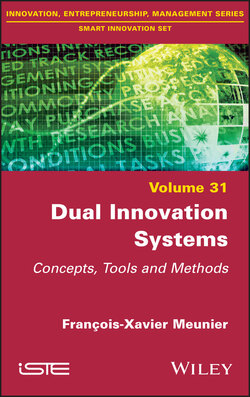Читать книгу Dual Innovation Systems - Francois-Xavier Meunier - Страница 16
1.4. Conclusion
ОглавлениеThis chapter shows there is an abundance of studies dealing with duality, and consequently a wealth of analyses. It also shows the existence of wide disparities in the very definition of duality. As such, it is worth noting the following three points:
– dual “object” and its governance: “in some very important dual-use fields like advanced materials and chemicals it is exceedingly difficult to separate process from product technologies” (Molas-Gallart 1997, p. 374). Duality is “the search for an organization of knowledge and information exchanges in which the State acts as facilitator” (Mérindol 2004, p. 102). These two quotations show the difficulty encountered when trying to grasp what duality is. In one case, it concerns products, in another the technologies and knowledge they are composed of; this may or may not include the means of production. There are many ways in which these issues can be addressed, as presented above, and due to their wide diversity, a synthesis is a challenging exercise. Two axes of analysis are however prominent: the dual object and the governance of duality;
– spillovers: “when duality is seen as a relation that sits not in the technology itself, but rather in a network in which the technology is designed and used, one can distinguish between duality and spillovers” (Cowan and Foray 1995, p. 852). This determines the type of sought-for effects by the implementation of a dual organization. The point of view expressed by Cowan and Foray is not unanimously adopted. Certain analyses highlight the asymmetric nature of research and development and show the domination of one or the other sector in certain technological fields (Alic et al. 1992). This involves accepting a technological gap and being pulled by the other sector in order to benefit from spin-offs in one sense as in the other (Moura 2011). These are opposite approaches, since according to one of them the objective is to promote joint technological production, while according to the other, one of the sectors benefits from the progress achieved by the other. In this case, duality “refers to the methods through which objects (products and artifacts) used in one field can be adapted to other fields” (Molas-Gallart 1997, p. 370);
– dual potential: “often the dual-use potential of many technologies is not realized” (Molas-Gallart 1997, p. 370). This latter point shows that, besides a matter of nature, the difficulty in defining duality is also a matter of level. From identifying a potential up to its use under multiple forms, there is a broad range of examples of dual technologies at various levels, both in terms of intensity and in terms of stage in their lifecycle in which this duality is manifest (Mowery 2010).
1 1 “The origin of critical technologies in the defense industry in France: spin-ins or spin-offs between defense and civilian sectors? Qualitative and quantitative processing for the case studies recently conducted in France”. IRIS stands for Institut de relations internationales et stratégiques (The French Institute for International and Strategic Affairs). Established in 1991 as a public interest association, IRIS is a Frenchthink tank dedicated to geopolitical and strategic issues, the only international think tank established by a fully private initiative, with an independent approach.
2 2 For further details on the role of DGA in the French innovation system, see Lazaric et al. (2011). Their work discusses the competences that DGA must have depending on the evolutions of the national innovation system, from the project architect to the project manager.
